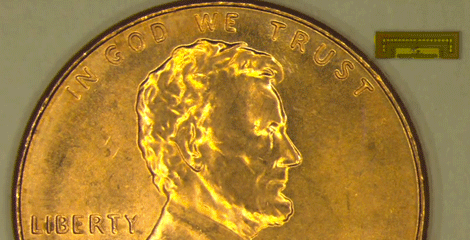
At only a few millimetres, radio-on-a-chip technology like this Stanford University prototype could enable trillions of devices to connect to the Internet of Things
The creation of a prototype radio-on-a-chip powered by ambient radio waves could change the way the Internet of Things is being viewed by designers and engineers.
The self-contained silicon chip devices don’t require batteries to run, are millimetres in size, and are potentially cheap to produce – allowing them to be placed in all manner of products previously thought too small to be connected.
Developed by a team of researchers at Stanford University and the University of California, Berkeley, the product architecture is scalable to the number of antennae a product needs in a very small space, while the lack of battery power means there is no ‘lifetime’ associated with them, scavenging the energy it needs from existent radio waves.
The current unit operates at 24 GHz/60 GHz to transmit and receive signals over a range of around 50cm, although a network of chips could create an interconnecting web throughout our daily lives.
At only a few cents each, it could be time to start considering what projects would benefit from connectivity as the project’s engineers envisage this discovery should boost connectivity in everyday objects.
//www.youtube.com/embed/i5bnmRpJmXA?rel=0






